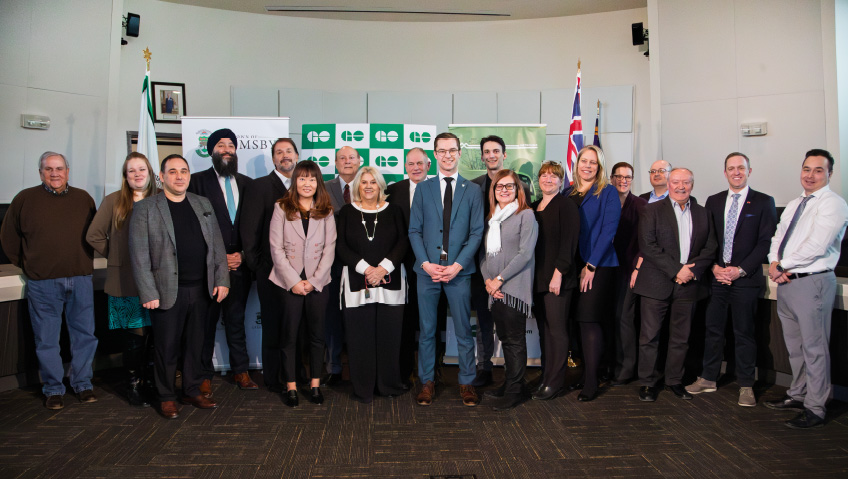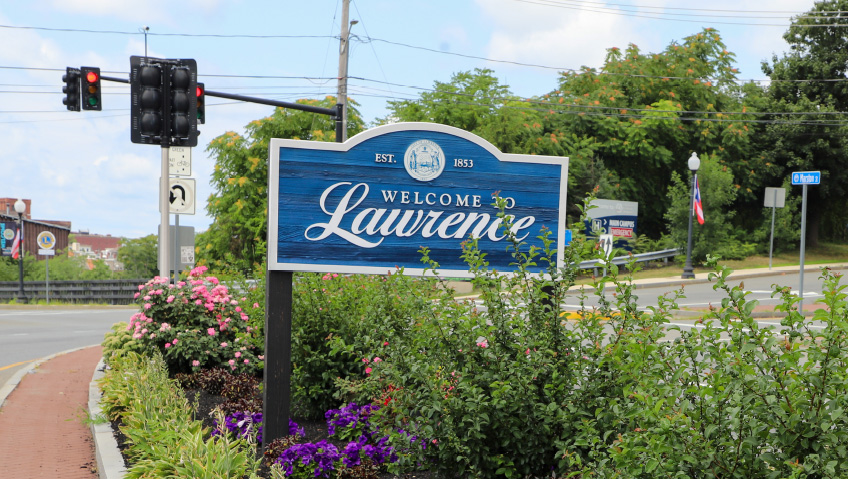With a population of almost 20,000 (and growing), Red Deer County offers a unique composition of urban and rural, village and country, industry and agriculture. The region pays homage to its existing industries and its agricultural foundation while keeping its sights set on the future.
The plan is to be on the leading edge of the digital transformation taking place in the market, and as a result, the economy is on a rising trajectory driven by digitization, sustainability, and connectivity, cornerstones of a vibrant and modern community.
The place to grow
Located along the Queen Elizabeth II Highway at the halfway mark between the two major hubs of the Edmonton-Calgary corridor, one of the most travelled roadways in North America, Red Deer County is ideally positioned to become an even more important economic player in the region, ready and able to serve the 2.4 million people who live within a 150-kilometre radius.
Via major investments in its assets and infrastructure, Red Deer County is reinforcing its economic strength by maintaining the rate of development that’s been going on for the last decade. The signs of this growth everywhere are amazing to see.
One area that has blossomed is Gasoline Alley, an up-and-coming live/work community just south of the City of Red Deer that began as nothing more than a “fuel-up and dine” concept, but today is a thriving retail, commercial, medical, financial, and residential hub with people flocking to it.
The first subdivision in the community, Liberty Landing, is a growing residential neighbourhood that’s expected to reach 5,000 people at full build-out. “As fast as they’re building the housing out there, they’re selling them,” says Economic Development Officer Sandra Badry. The project is currently completing Phase B.
The area is also home to the new Indoor Farmer’s Market that sprang up during the pandemic and has since become a popular fixture in the community, bringing together the agricultural folk and the residents of central Alberta. Soon, visitors will have live music and entertainment with a highly-anticipated outdoor music venue that’s in development.
At the Junction
With Gasoline Alley’s retail, commercial, and residential development plans well underway, Red Deer County’s development team has its sights set on the next growth target: Junction 42, located eight kilometres south of Gasoline Alley.
“The impetus for Junction 42 was that, when they created the overpass from the City of Red Deer to Gasoline Alley, Alberta Transportation kind of changed the access, making it inconvenient for truck drivers to get into Gasoline Alley,” says Badry. The county and the province got together to find a solution, which was the Partnership Rest Stop.
“Together we paved five acres for parking and then we approached Petro-Canada and brought in the truck stop, the card lock, and also a few fast-food restaurants,” Badry says. These included a Canadian staple, Tim Horton’s, Burger King, Pizza Pizza, and other retail shops. In 2022, 200,000 trucks stopped in, basically one large truck every two minutes.
To take advantage of this traffic, the area is slated for further development. Subsurface magnets are used to track visitation and get a sense of visitor behaviour. It shows that there is still greater demand to be filled.
“Ironically, our peak times are from midnight to six a.m.,” Badry notes, “so we are desperately searching for a diner that will come in and do that 24-hour service. We’re looking at putting in another five acres because it’s packed at those peak times.”
As well as servicing the trucking community, Junction 42 will serve the local community as a business campus where circular industries are being targeted. According to Badry, “Junction 42 is going to be a very high-tech innovative business campus where one business will create energy that another business will work off.”
For instance, vertical or hybrid farming models, agri-tech businesses and biomass, and other businesses that work together or offset each other. Without question, the time is now for these innovative and sustainable developments.
If the food shortages of late are any indication, Badry is right when she says, “We can’t rely on California or Mexico as much as we used to do. We have to start looking after our own and we can do it, it’s not impossible. The development we plan out there that’s going to create jobs will also create opportunities for residential building and all kinds of other opportunities for our surrounding communities,” she says, and she adds that it will be another step towards sustainability and self-sufficiency.
Landing the big ones
Junction 42 is also proximate to the Red Deer Regional Airport, where $15 million was invested last year to widen and strengthen the runway and where plans are underway to further improve its services to scheduled passenger service and cargo aircraft.
“The runway went from thirty meters to forty-five meters wide and we strengthened it enough to land 737s now, so that means that we can land passenger airplanes as well as cargo,” says Badry. This will support the addition of distribution providers in the area who could benefit from connectivity to the highway.
She adds, “We also have the ability to develop along the north end of the runway as well, so we have 800,000 square meters of developable land along the runway which allows for air-side or ground-side access.” She points out that this is ideal for cargo service or aeronautical maintenance activities.
Up next, a terminal project is in the works with a target completion date of 2024. Between the runway-side opportunities and the potential of a new terminal, the Red Deer Regional Airport will make it much easier to land new business and better connect its residents to the rest of the province, the country, and the world.
Heightened connectivity
Improved connectivity is a priority of Red Deer County’s economic development team. This is evident in the significant investments in its broadband infrastructure to ensure that an end-to-end fibre-optic network is available to service residents and the growing economy.
A handsome $18 million of county funds have already been allocated to bringing high-speed broadband to businesses in Red Deer County, as well as to outlying county residents, villages and hamlets. The plan is to ensure optimal connectivity and productivity for everyone. If the pandemic did anything, it emphasized the need for widely available connective services, and Red Deer County is set on becoming one of the most connected places in North America.
For Badry, this kind of investment just makes sense. “We’ve got all these smaller hamlets and villages in our broadband project, which will enable us to bring connectivity to those people who want to live in a modern economy but want that country lifestyle.”
That country lifestyle, too, depends on high-speed broadband connectivity. The strong agricultural community is modernizing as part of the digital revolution, and a new generation of farm equipment dependent on high-speed internet connectivity is on the land. Strong connectivity also supports farmers who sell directly to customers via the internet.
Both the new development at the airport and the broadband investment are a boon for nearby communities like Springbrook and Penhold, anxious to attract new residents with their potent blend of modern amenities, rural charm, and the natural beauty of the region.
Future-focused and leading the way
Red Deer County has earmarked cleaner, leaner, and greener industries like agri-tech, hydrogen, and film and television production as target industries for growth, but to support these new industries and expansions, there must be a simultaneous focus on talent development.
The development team is working closely with local education partners like Red Deer Polytechnic and Olds College of Agriculture & Technology to identify the emerging workforce needs of the economy and address them through program development and youth attraction campaigns whether that be aeronautical or skilled trades. Currently, a labour force study is underway.
These efforts to make Red Deer County a wonderful place to do business were recently recognized by Minister of Municipal Affairs Ric McIver who presented the County with the 2021 Minister’s Award for Municipal Excellence, which recognizes red tape reduction in a rural municipality: an honour that’s well-deserved.
When it comes to growth and development, Red Deer County knows what it wants and how to achieve success. Awards are a solid acknowledgement of these efforts, but the best payout is seeing plans come to fruition.
As Badry notes, “Red Deer County has always looked at itself as a leader and not a follower and we try to be the first. We have very high standards for ourselves, and we work hard to maintain that.”






